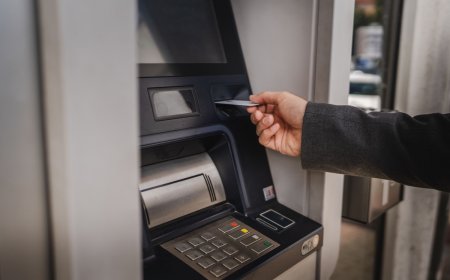Why Asset Discovery Is Critical for Network Security
a strong cybersecurity strategy is Asset Discovery. Without full visibility into every asset connected to your network, it becomes nearly impossible to defend your digital environment effectively.

In an era where cyber threats are becoming increasingly sophisticated, protecting your organization starts with knowing what you're protecting. One of the most overlooked yet essential components of a strong cybersecurity strategy is Asset Discovery. Without full visibility into every asset connected to your network, it becomes nearly impossible to defend your digital environment effectively.
What is Asset Discovery?
Asset Discovery refers to the process of identifying, cataloging, and monitoring all hardware, software, and devices connected to an organization’s network. This includes everything from servers, routers, and IoT devices to applications, cloud services, and shadow IT components. Essentially, if it’s part of your network or has access to your systems, it needs to be discovered and accounted for.
The goal is to create a comprehensive and real-time inventory of every asset so that security teams can effectively manage vulnerabilities, control access, and respond to threats in a timely manner.
Why Asset Discovery Matters for Network Security
1. You Can't Protect What You Can't See
One of the fundamental truths in cybersecurity is that visibility is everything. If you don’t know a device or service exists on your network, it can’t be monitored, updated, or secured. This creates dangerous blind spots that attackers can exploit.
Asset Discovery helps eliminate these blind spots by continuously scanning and identifying new and existing assets in your environment. This ensures security teams always have a clear understanding of what needs protection.
2. Combatting Shadow IT
Shadow IT—unsanctioned applications and devices used without the knowledge of the IT department—is a growing risk. Employees might install third-party tools, connect personal devices, or use unsanctioned cloud services to make their work easier, but these assets often fall outside security policies.
With automated Asset Discovery, organizations can detect shadow IT in real time and take action to bring these assets into compliance or block them altogether.
3. Improving Vulnerability Management
Every asset introduces potential vulnerabilities, especially if it is outdated or unpatched. Effective Asset Discovery enables vulnerability management by ensuring every asset is included in vulnerability scans. When you have a complete inventory, you can more accurately assess risk levels and prioritize patches and updates.
By pairing Asset Discovery with a vulnerability management system, organizations can significantly reduce the time it takes to identify and remediate critical issues.
4. Regulatory Compliance
Various industry regulations—like GDPR, HIPAA, PCI-DSS, and ISO/IEC 27001—require organizations to maintain an accurate inventory of their IT assets. Failing to comply can result in heavy fines and reputational damage.
Implementing Asset Discovery tools not only helps meet compliance requirements but also provides documented evidence during audits that your organization is following best practices in IT asset management and security.
5. Supporting Incident Response
When a breach occurs, time is of the essence. Security teams need to know what assets are affected, where they're located, and what systems they connect to. Asset Discovery provides this visibility, allowing teams to isolate affected systems, track lateral movement, and respond faster and more effectively.
In short, real-time asset intelligence is critical during any incident response scenario, reducing both response time and potential damage.
6. Enhancing Attack Surface Management
The attack surface of any organization includes all points where an attacker could try to gain access—every endpoint, server, cloud instance, and third-party connection. Asset Discovery is foundational to Attack Surface Management because it identifies and categorizes these points of exposure.
Once you understand the full extent of your attack surface, you can more effectively monitor for suspicious behavior, enforce access control policies, and reduce unnecessary exposure.
Manual vs. Automated Asset Discovery
Manual asset tracking methods like spreadsheets are outdated and prone to error. Modern environments are dynamic, with assets being added, removed, or modified constantly.
Automated Asset Discovery tools offer continuous, real-time insights and reduce the risk of human error. These tools can scan IP ranges, leverage agent-based or agentless discovery methods, and integrate with existing security platforms to provide comprehensive visibility.
Choosing the Right Asset Discovery Tool
When evaluating an asset discovery solution, consider the following capabilities:
-
Real-time scanning for both on-prem and cloud environments
-
Integration with other security tools like SIEMs, vulnerability scanners, and CMDBs
-
Automatic classification and tagging of discovered assets
-
Alerting and reporting features for unusual activity or unauthorized devices
-
Scalability to match the size and complexity of your infrastructure
Take the Next Step with Searchlight Cyber
At Searchlight Cyber, we understand how critical visibility is to protecting your organization from threats originating both inside and outside your network. Our solutions are designed to give you a comprehensive understanding of your digital footprint, enabling faster threat detection and better decision-making.Book a demo to see how we can help improve your asset visibility and network security.
Final Thoughts
Asset Discovery is not just a nice-to-have—it’s a non-negotiable for any organization serious about network security. In a landscape filled with unknowns and evolving threats, visibility is your first and most important line of defense. By investing in automated asset discovery, you lay the groundwork for a more secure, compliant, and efficient cybersecurity posture.











































